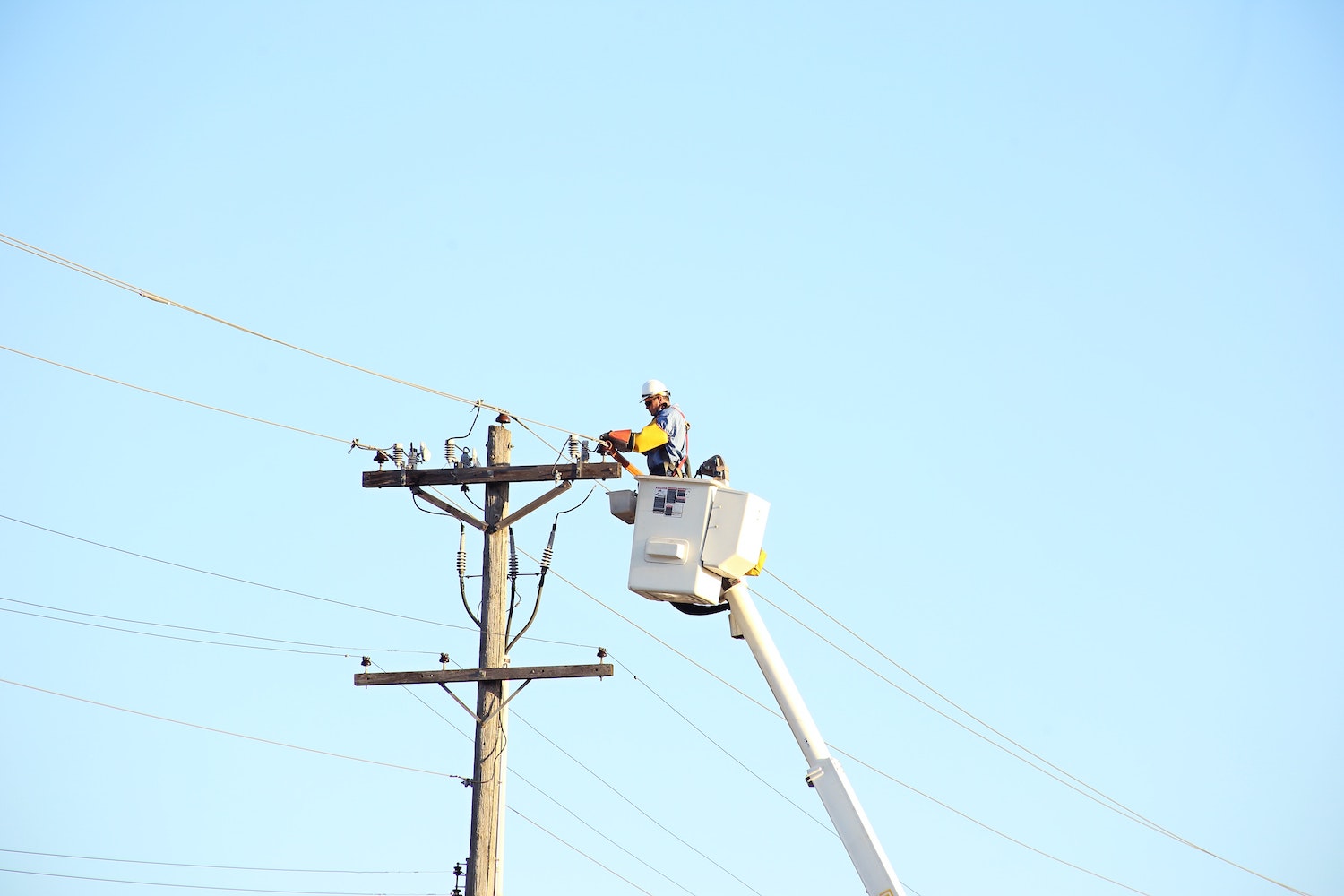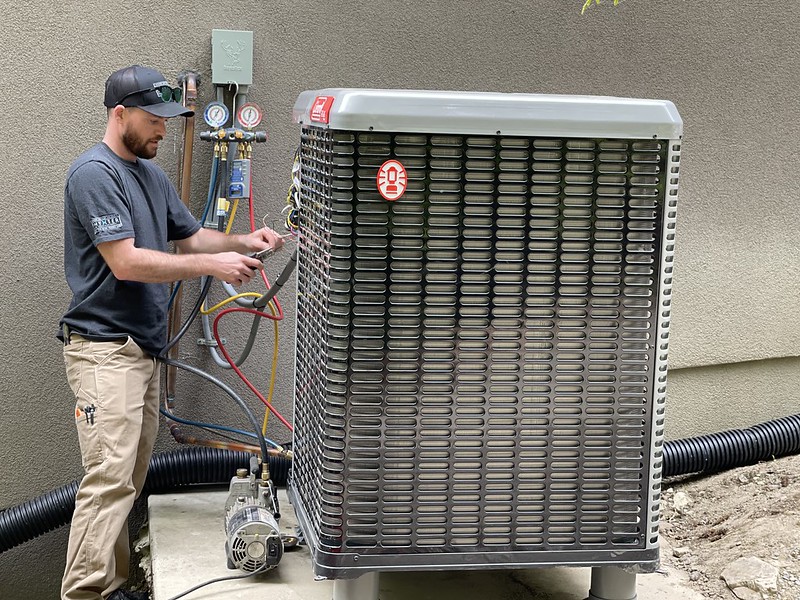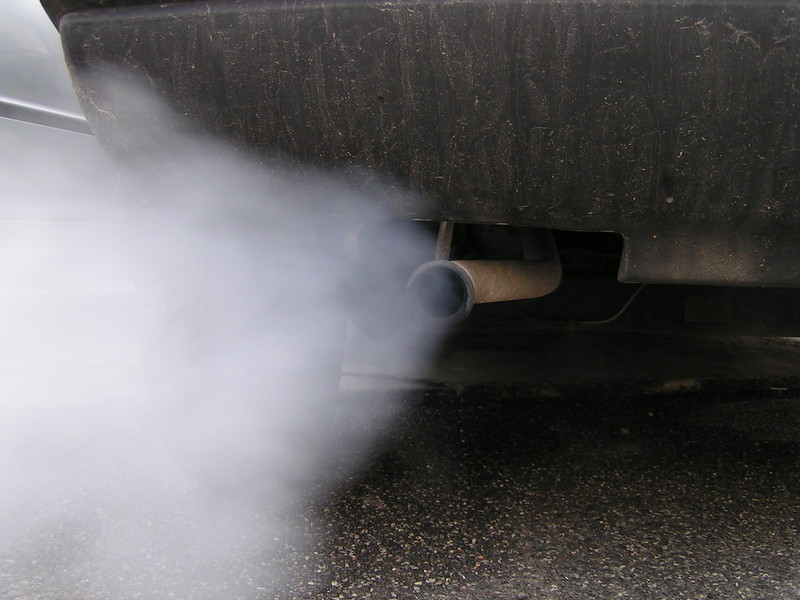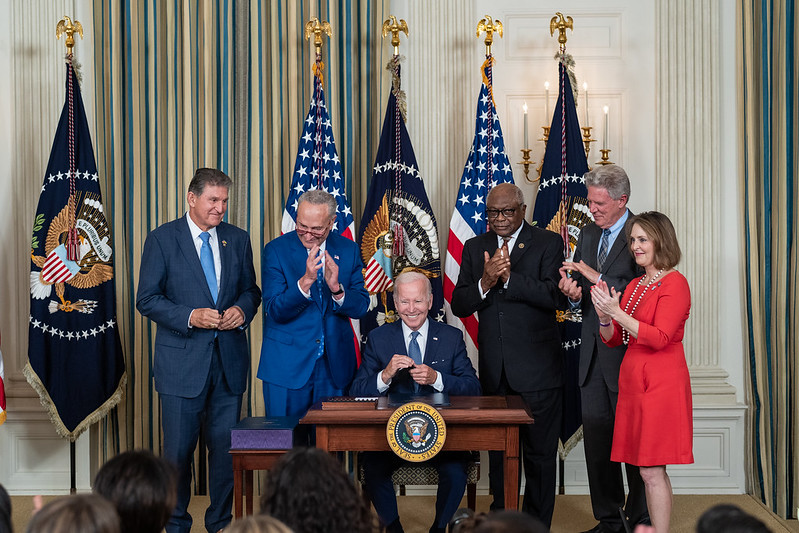4. Aggressively pursue federal funding to bolster clean energy development, promote equity, improve efficiency, cut pollution, and supercharge state-level climate action.
In 2022, President Biden and Congress delivered the Inflation Reduction Act (IRA), the largest climate and clean energy investment in US history. States are eligible recipients of nearly 40 different IRA programs; a total of more than $50 billion to directly support state climate action. The IRA also includes hundreds of billions of dollars that can flow directly to individuals, businesses, tribes, and community organizations, and states can play a key role in communicating these opportunities to ensure their constituents reap the benefits of this transformational legislation. Additionally, the IIJA provides billions of dollars for clean infrastructure throughout the U.S.
Federal programs targeted directly to state governments aim to promote home energy efficiency, fund decarbonization projects, create equitable green financial institutions, and more. But the IRA and IIJA’s far-reaching benefits will only be available to states that apply for funding and show they’re ready to implement these programs effectively. Several IRA and IIJA programs are beginning to roll out, and states should closely monitor the multitude of funding opportunities and application deadlines in 2023.
Strategic use of federal dollars and well-designed state-level programs have the potential to create thousands of jobs, lower costs for Americans, drive investment into disadvantaged communities, and put states on the path to meeting their own climate commitments.
For descriptions and more information on all climate and clean energy programs in the IRA, see the White House's IRA Guidebook. Programs that states should be ready to apply for early in 2023 include:
Greenhouse Gas Reduction Fund - $27 billion designed to both support state governments in deploying zero emission technologies and create an ecosystem of green banks that finance climate and clean energy projects, especially in disadvantaged communities. The Environmental Protection Agency (EPA) may begin making grants under this section as soon as February 2023.
Climate Pollution Reduction Grants - Another new EPA program that will provide $5 billion in direct grants available to states, local governments and Tribal nations to plan for and implement policies and investments that reduce climate pollution.
State home energy programs - A total of $9 billion across three provisions for states and Tribal nations to implement consumer rebate programs that will promote energy and cost savings through efficiency and electrification projects, with a focus on low-income residents. The Department of Energy (DOE) anticipates that the funding to states will be available sometime early in 2023.
These are just a few of the many opportunities for states in the IRA. Other programs support transmission siting, clean energy infrastructure financing, building code updates, agriculture and conservation, clean vehicles, air pollution monitoring, and more. For a complete list of IRA clean energy and climate programs in which states are eligible to receive funding, see this resource from Evergreen Action, which includes program descriptions, funding amounts, eligible recipients, and other details.
States have a generational opportunity to both implement and build on the federal victories the climate movement secured in 2022. 2023 needs to mark the beginning of an era of accelerated state climate leadership. Governors should begin their terms prepared to mobilize their entire administrations to go further and faster on climate than ever before.







